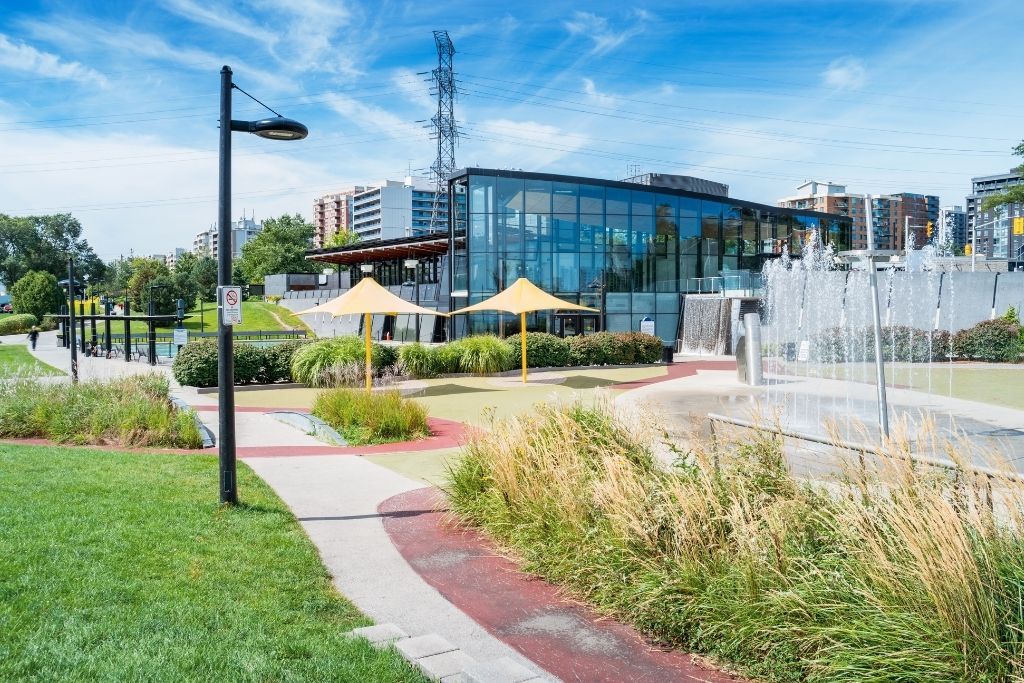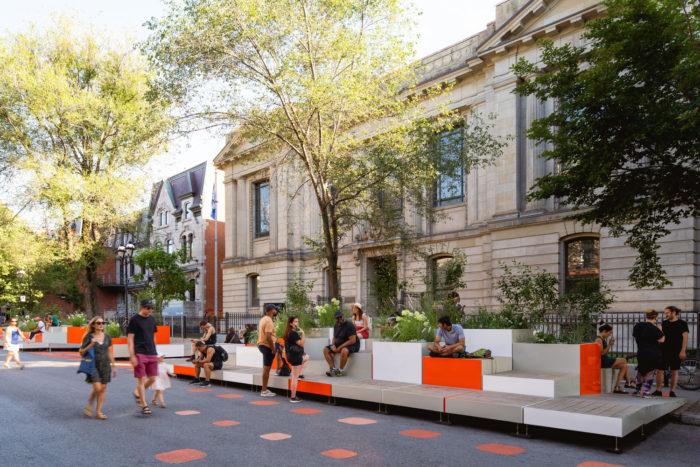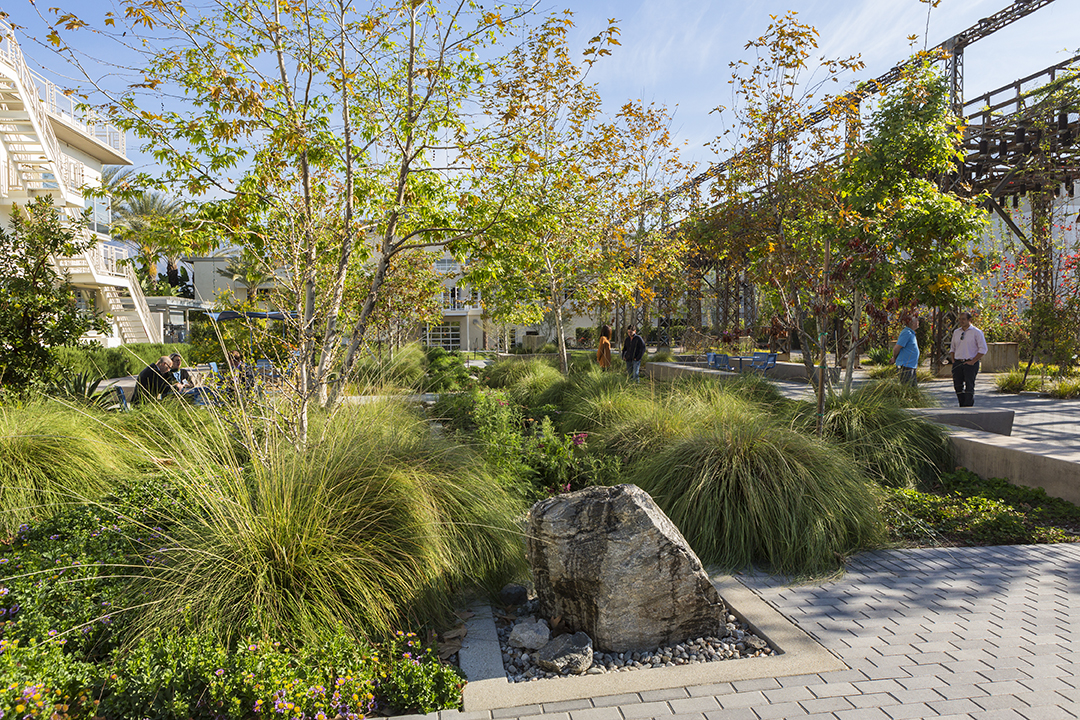The Challenges Builders Face with Landscape Design
1. High Maintenance Costs
Many landscape designs prioritize aesthetics over
practicality, resulting in landscapes that require excessive upkeep, driving up
operational expenditure.
2. Poor Integration with
Architecture
When landscape design is treated as an
afterthought, it often clashes with the building's architecture or fails to
optimize the available space.
3. Missed Opportunities for Value
Addition
Landscapes are powerful marketing tools. Poorly
designed outdoor spaces can fail to attract buyers or tenants, leaving
properties undervalued.
4. Sustainability Concerns
With increasing focus on sustainability,
non-integrated designs often overlook opportunities to reduce water and energy
consumption, leading to environmental inefficiencies.
How Landscape-Integrated Design Solves These
Problems
1. Seamless Integration with
Architecture
A landscape-integrated approach ensures that
outdoor spaces are thoughtfully woven into the building’s design from the
start. This creates cohesive, visually appealing, and functional spaces that
enhance the overall project.
2. Cost-Effective Solutions
Professionals experienced in landscape-integrated
design focus on long-term operational efficiency, reducing maintenance and
resource costs. By using native plants, strategic water management, and
resilient materials, builders save on both CAPEX and OPEX.
3. Increased Marketability
Buyers and tenants are increasingly drawn to
properties with well-designed outdoor spaces. Landscapes that prioritize user
experience—such as shaded seating areas, green pockets, and vibrant social
spaces—can significantly elevate a project's appeal.
4. Sustainability as a USP
With sustainable design practices like rainwater
harvesting, permeable surfaces, and biodiversity-driven planting, builders can
meet environmental regulations and promote their projects as eco-friendly,
adding a valuable USP.
What Experience Brings to the Table
A landscape professional
experienced in integrated design offers:
1. Strategic Thinking:
A deep understanding of how to align landscape
design with the project’s architectural goals and user needs.
2. Sustainability Expertise:
Knowledge of ecological systems,
native planting, and resource optimization.
3. Problem-Solving Skills:
Solutions to unique site
challenges like poor soil quality, water scarcity, or uneven topography.
4. Proven Processes:
Streamlined workflows that
ensure timely execution and collaboration with other disciplines like
architects and civil engineers.
5. Enhanced ROI:
By creating landscapes that are
both functional and aspirational, experienced designers help builders increase
property value and attract premium buyers.
The Value of Early Collaboration
Involving a landscape design professional early in
the project lifecycle is crucial for achieving landscape integration. From
conceptual planning to execution, their expertise ensures that every square
foot is optimized for beauty, utility, and sustainability.
Case in Point
Imagine a residential community
with a central landscaped courtyard. When designed as an integral part of the
project, it can serve as:
A gathering space that fosters community.
A cooling green zone that reduces the urban heat island effect.
A visually striking feature that enhances property value.
Now imagine the same space
without integration—perhaps poorly lit, difficult to maintain, or out of sync
with the building’s layout. The result is a wasted opportunity and a costly
liability.
The Bottom Line
For builders, landscape-integrated design isn’t
just an optional luxury; it’s a strategic necessity. With an experienced
landscape professional on board, you can avoid costly mistakes, elevate your
project’s value, and deliver spaces that truly resonate with today’s
environmentally conscious and design-savvy buyers.
The difference between landscape design and
landscape-integrated design lies in their approach, purpose, and level of
integration with the built environment. Here’s a detailed comparison:
Landscape Design
1. Definition:
Landscape design focuses on the
planning and arrangement of outdoor spaces to enhance their aesthetic appeal,
functionality, and usability. It primarily emphasizes visual elements and
spatial organization.
2. Key Characteristics:
a. Aesthetic-Centric:
i.
Emphasis on
creating visually appealing outdoor spaces, often prioritizing form and beauty.
ii.
Incorporates
elements like lawns, gardens, hardscapes, and decorative features.
b. Standalone Approach:
i.
Often
treated as a separate layer added to the project after architectural or
structural design is completed.
ii.
May not
fully align with the architecture or the broader vision of the project.
c. Maintenance-Focused:
i.
Designs can
sometimes lead to high maintenance costs due to the selection of
resource-intensive plants and materials.
d. Limited Functionality:
i.
Focus on
ornamental value, with less consideration for how the space interacts with
users or the environment.
Landscape-Integrated Design
1. Definition:
Landscape-integrated design is a
holistic approach that integrates landscape elements with architecture,
engineering, and urban planning. It considers aesthetics, functionality,
sustainability, and the natural environment as interconnected components.
2. Key Characteristics:
a. Holistic and Contextual:
i.
Prioritizes
harmony between built and natural environments.
ii.
Responds to
site-specific factors like topography, climate, and ecological systems.
b. Collaborative and Embedded:
i.
Begins
early in the design process alongside architecture and engineering.
ii.
Creates a
seamless relationship between indoor and outdoor spaces.
c. Sustainability-Oriented:
i.
Uses native
and adaptive plants to reduce water and energy consumption.
ii.
Incorporates
features like rainwater harvesting, green roofs, and permeable surfaces.
d. Multi-Functional Spaces:
i.
Designs
spaces that serve multiple purposes, such as recreation, stormwater management,
and biodiversity preservation.
ii.
Enhances
user experience while addressing environmental concerns.
e. Long-Term Value:
i.
Reduces
operational and maintenance costs through efficient, resilient design.
ii.
Adds
marketability by creating landscapes that improve quality of life and property
value.
Conclusion:
While landscape design is a
traditional approach focused on creating beautiful outdoor spaces,
landscape-integrated design elevates this by embedding functionality,
sustainability, and harmony into the broader vision of a project. This makes
landscape-integrated design ideal for builders, developers, and communities
seeking long-term value and ecological responsibility.
Example: Designing Outdoor Spaces for a Residential
Community
Scenario:
A builder is developing a
residential community with a central open space that includes a clubhouse, a
playground, and green areas.
Approach 1: Traditional Landscape Design
Design Elements:
- Decorative lawns and flowerbeds
with exotic plant species.
- A paved walkway with ornamental
lighting.
- A water fountain as a focal
point.
- A playground with standard
equipment.
- The space looks visually
appealing but lacks deeper functionality.
- High water and maintenance
requirements due to non-native plants and lawns.
- Poor integration with the
clubhouse design; the open space feels disconnected from the rest of the
project.
- No environmental or ecological
features are incorporated, missing an opportunity for sustainability.
Approach 2: Landscape-Integrated
Design
Objective: Integrate the outdoor space with the architecture and ecology to enhance functionality, sustainability, and user experience.
- Ecological Planting: Use native
and drought-tolerant plants that align with the local climate, reducing water
consumption and supporting biodiversity.
- Multi-Use Green Spaces: Design the central lawn with gentle slopes and rain gardens to manage stormwater, creating functional and attractive green infrastructure.
- Interactive Design: Include
shaded seating areas near the clubhouse that blend with its architectural
style, encouraging social interactions.
- Sustainability Features: Add
permeable walkways, solar lighting, and a biophilic play area with natural
materials to foster a deeper connection with nature.
- Climate Resilience: Incorporate
windbreaks and shading trees that reduce heat while providing comfort for
residents.
Outcome:
- The landscape complements the architecture, making the clubhouse and green spaces feel like one cohesive unit.
- Maintenance costs are significantly reduced with native planting and sustainable features.
- Residents enjoy functional spaces for recreation, relaxation, and socialization, making the community more attractive to potential buyers.
- The project aligns with environmental goals, enhancing its marketability and long-term value.
Key Difference
1. Traditional Landscape Design
focuses on aesthetics and creating visually pleasing spaces, often with little
thought given to sustainability, functionality, or integration with the built
environment.
2. Landscape-Integrated Design
creates spaces that are functional, sustainable, and harmonized with the
architecture and ecology, providing long-term value to builders and residents
alike.
Ready to transform your projects with landscape-integrated design? Let’s collaborate.











